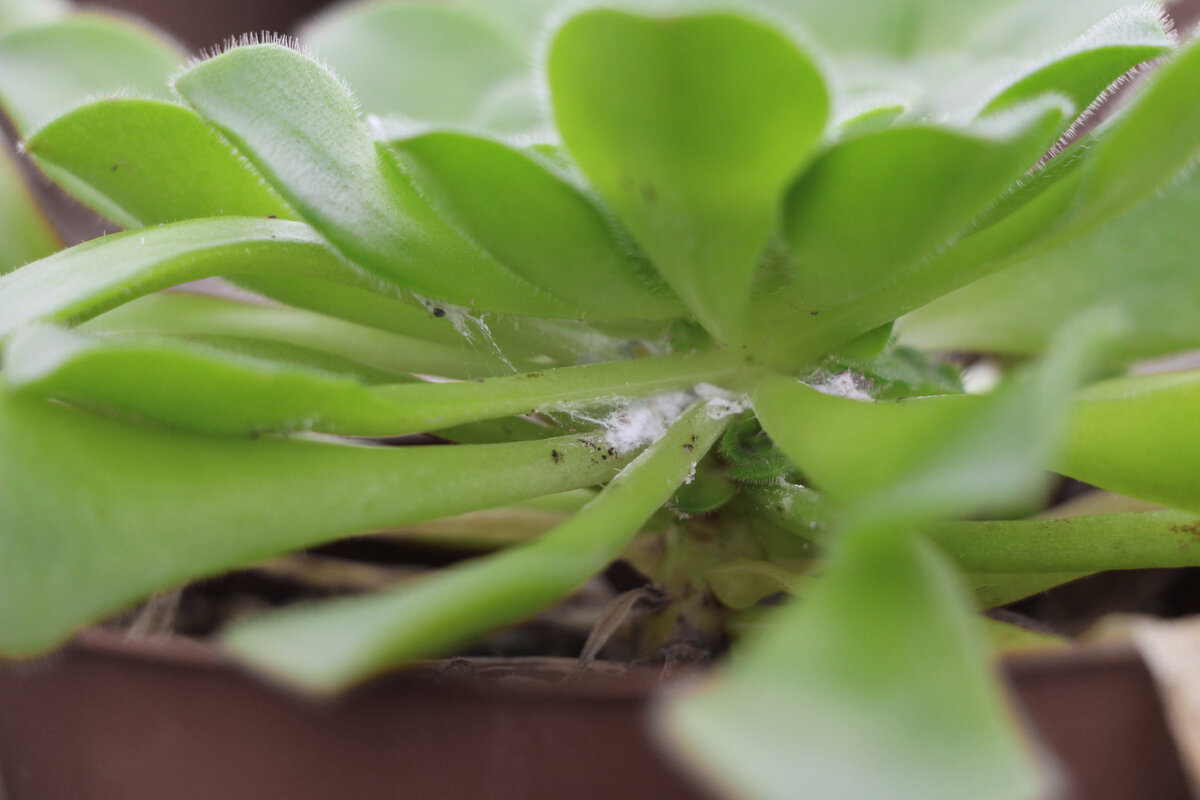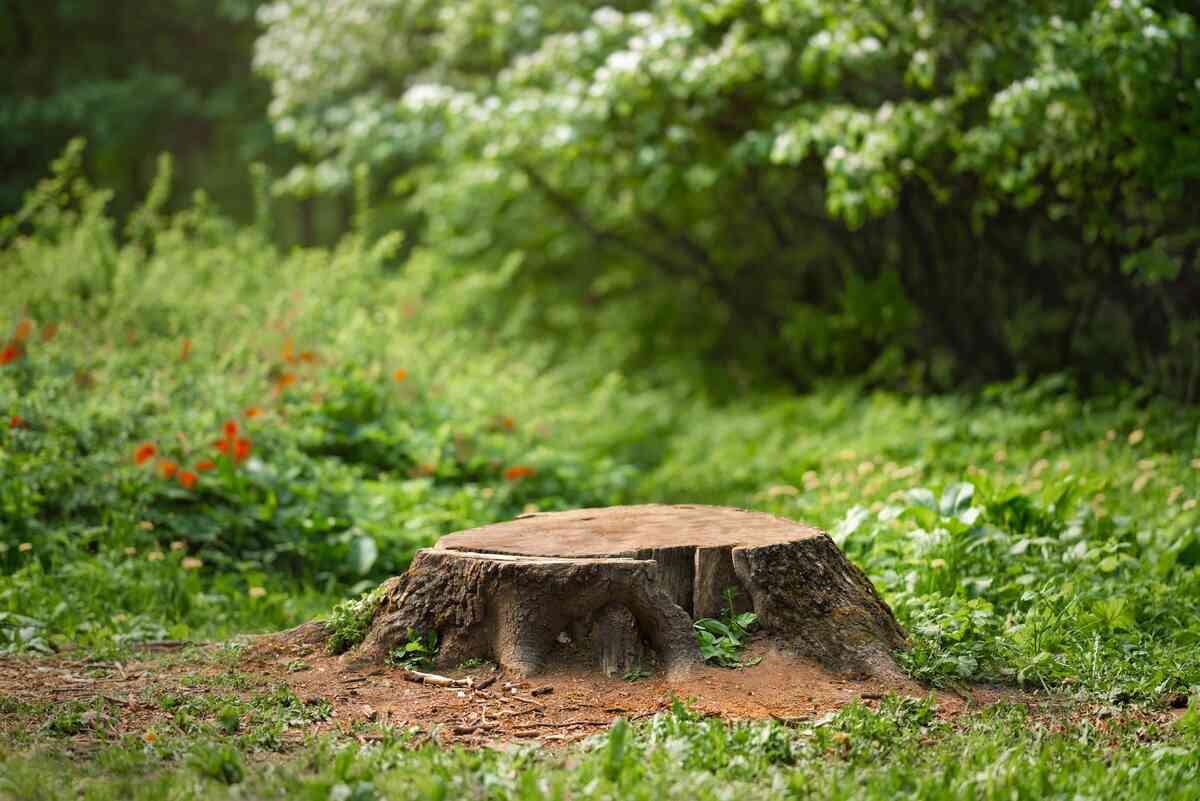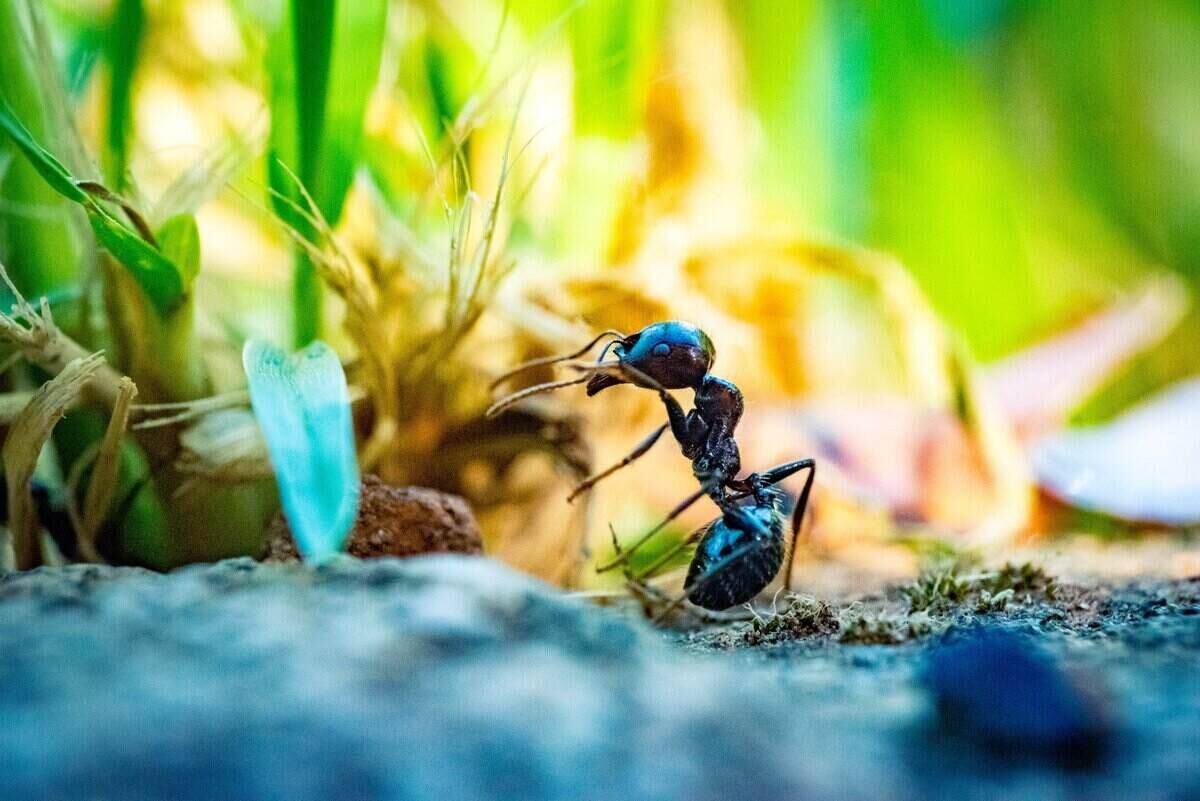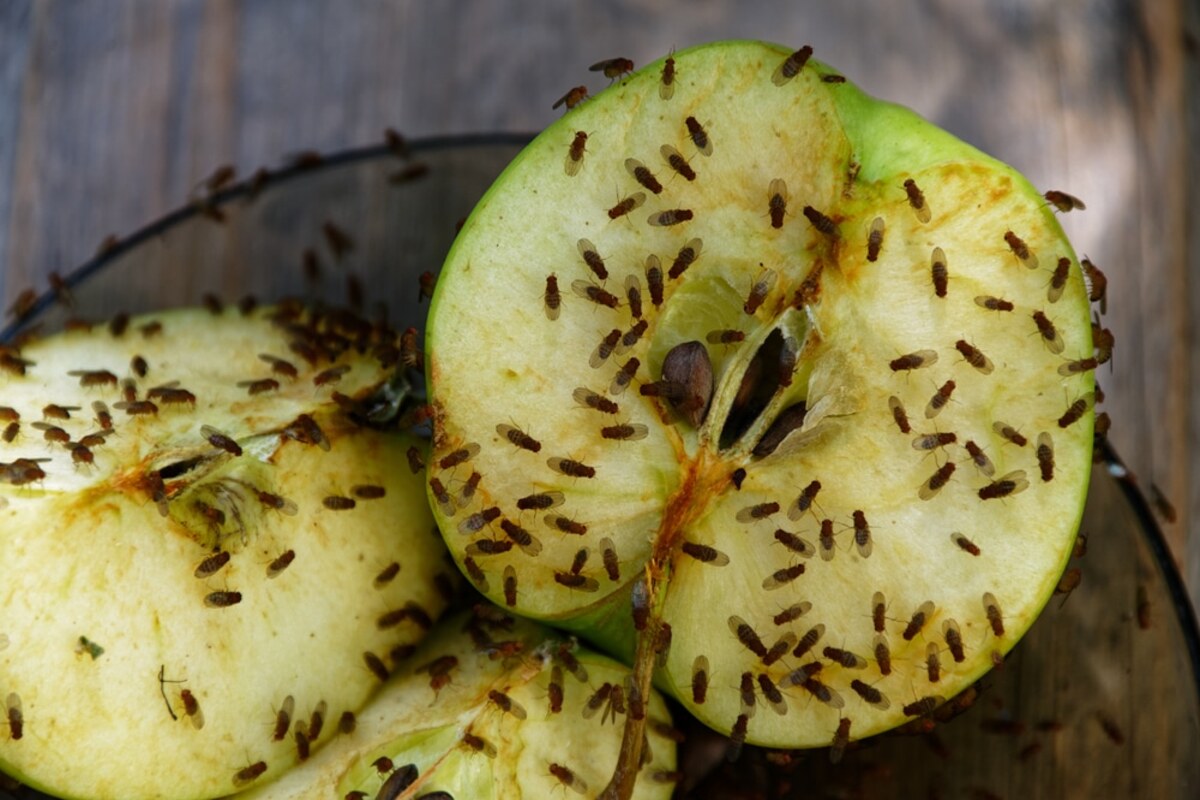Home>Gardening Tips and Tricks>Problem Solving>How To Get Rid Of Aphids On Succulents


Problem Solving
How To Get Rid Of Aphids On Succulents
Modified: January 22, 2024
Learn effective problem-solving techniques to eliminate aphids on your succulents and restore their health. Follow our step-by-step guide for successful aphid removal.
(Many of the links in this article redirect to a specific reviewed product. Your purchase of these products through affiliate links helps to generate commission for Chicagolandgardening.com, at no extra cost. Learn more)
Table of Contents
Introduction
Succulents are popular plants known for their unique forms and ability to store water. They bring a touch of elegance and tranquility to any space. However, these resilient plants are not immune to pests, and one common problem that succulent enthusiasts often face is aphids infestation. These tiny insects can wreak havoc on your succulents if left unchecked.
Aphids are small, soft-bodied insects that feed on the sap of plants, including succulents. They reproduce rapidly and can quickly colonize your beloved succulents. If not addressed, aphids can weaken the plants, stunt their growth, and even lead to their eventual demise.
Identifying aphids on succulents is crucial for effective pest control. These pests come in various colors, including green, yellow, black, or brown. They have pear-shaped bodies and can cluster on the leaves, stems, and buds of succulents. Aphids feed by piercing the plant tissue and extracting its sap, leaving behind a sticky residue called honeydew, which attracts ants and can promote the growth of sooty mold.
While aphids can be a real nuisance, there are plenty of natural ways to control their infestation on succulents. In this article, we will explore various methods to get rid of aphids and prevent their return, ensuring your succulents thrive in a healthy and pest-free environment.
Understanding Aphids
Aphids are tiny insects that belong to the order Hemiptera, commonly referred to as plant bugs. They are notorious pests in gardens and agricultural settings, as they have a voracious appetite for plant sap. There are over 4,000 known species of aphids, each with their own preferred host plants.
These small pests range in size from 1 to 6 millimeters, making them barely visible to the naked eye. They come in a variety of colors, including green, yellow, black, or brown. Aphids have soft, pear-shaped bodies with long antennae and long, slender mouthparts called stylets, which they use to pierce plant tissue and feed on the sap.
One remarkable aspect of aphids is their ability to reproduce rapidly. They have a unique reproductive strategy known as parthenogenesis, which allows females to give birth to live nymphs without the need for fertilization from males. This asexual reproductive process enables aphid populations to grow exponentially in a short period.
Another characteristic of aphids is their production of a sticky, sugary substance called honeydew. Aphids excrete honeydew as they feed on plant sap. This sticky substance can accumulate on leaves, stems, and other surfaces, creating an ideal environment for the growth of sooty mold. Sooty mold is a black fungus that can cover the leaves of plants, inhibiting photosynthesis and causing further damage.
Aphids are not only harmful due to the direct damage they cause to plants, but they can also transmit plant viruses. These viruses can affect the health and vigor of plants, leading to reduced growth, distorted foliage, and diminished flower production.
Understanding the biology and behavior of aphids is essential for effective pest control. By knowing their characteristics and preferred habitats, you can implement targeted measures to get rid of aphids on your succulents and prevent future infestations.
Identifying Aphids on Succulents
Identifying aphids on your succulents is the first step in controlling their infestation. These tiny insects have distinct characteristics that make them fairly easy to spot. Here are some key features to look out for:
- Size and Shape: Aphids are small insects, typically ranging from 1 to 6 millimeters in length. They have a soft, pear-shaped body with a rounded abdomen. Their small size makes them barely visible to the naked eye, so it’s important to examine your succulents closely.
- Coloration: Aphids come in various colors, depending on the species and stage of development. Common colors include green, yellow, black, or brown. Some aphids may also have distinct markings or patterns on their bodies.
- Antennae: Aphids have long, slender antennae that curve backward. These antennas are an identifying feature that distinguishes them from other small insects.
- Location on Plants: Aphids tend to congregate on the leaves, stems, and buds of succulents. They often cluster together in groups, especially on new growth and tender plant parts.
- Honeydew: As aphids feed on plant sap, they excrete a sticky substance called honeydew. This residue can accumulate on the leaves and stems of succulents, making them appear shiny or sticky. Honeydew also attracts ants and can promote the growth of sooty mold.
When inspecting your succulents for aphids, it’s crucial to check both the upper and lower surfaces of the leaves, as well as the stems and buds. Aphids can blend in with the plant’s coloration, so take your time and look for any signs of movement or clusters of insects.
Remember, early detection is key to preventing aphid infestations from spreading and causing further damage to your succulents. Regularly inspect your plants and take action at the first sign of aphids to protect the health of your succulents.
The Damage Aphids Cause
Aphids may be small insects, but they can cause significant damage to your succulents if left uncontrolled. Here are some of the detrimental effects that aphids can have:
- Sap Extraction: Aphids are sap-sucking insects. They use their piercing mouthparts to extract the nutrient-rich sap from the tissues of your succulents. This constant feeding weakens the plants and can result in stunted growth and poor overall health.
- Deformation and Distortion: The feeding activity of aphids can cause the leaves of your succulents to become deformed or distorted. Curling, curling of leaves, and misshapen growth are common signs of aphid damage.
- Yellowing and Discoloration: As aphids drain the sap from your succulents, the leaves may start to turn yellow or develop discolored patches. This can impact the aesthetic appeal of your plants and indicate underlying stress or damage.
- Reduced Vigor: When infested with aphids, succulents often experience a decline in vigor. They may appear weak and lack vitality, with diminished growth and limited flower production.
- Honeydew and Sooty Mold: The honeydew excreted by aphids can coat the leaves and stems of your succulents, creating a sticky and unsightly mess. This sticky residue not only attracts ants but also serves as a breeding ground for sooty mold. Sooty mold is a black fungus that can cover the leaves, inhibiting photosynthesis and further weakening the succulents.
- Transmission of Viruses: Aphids can also transmit plant viruses from one succulent to another. These viruses can cause a range of problems, including discoloration, deformities, and reduced plant vitality.
The damage caused by aphids not only affects the appearance of your succulents but can also impact their overall health and ability to thrive. Prompt and effective control measures are necessary to prevent the infestation from worsening and to restore your succulents to their optimal condition.
Natural Ways to Control Aphids on Succulents
When it comes to controlling aphids on your succulents, there are several effective and environmentally friendly methods that you can employ. These natural solutions can help you get rid of aphids without resorting to harmful chemicals. Here are five natural ways to control aphids on succulents:
- Manual Removal: One of the simplest methods is to manually remove aphids from your succulents. Wear gloves and gently wipe or brush the aphids off the leaves and stems. You can also use a soft brush or a stream of water to dislodge the pests.
- Water Spray: A powerful stream of water can effectively knock aphids off your succulents. Use a spray bottle or a hose with a spray attachment to direct a forceful jet of water onto the plants. This method is particularly useful for smaller infestations or for succulents with delicate foliage.
- Insecticidal Soap: Insecticidal soaps are effective in controlling aphids while being gentle on your succulents. These soaps are made from natural ingredients and work by suffocating and dehydrating the pests. Follow the instructions on the product label and apply the soap to the affected succulents, making sure to cover both the upper and lower leaf surfaces.
- Neem Oil: Neem oil is a natural insecticide derived from the seeds of the neem tree. It disrupts the feeding and reproductive cycles of aphids, ultimately leading to their demise. Mix the neem oil with water according to the instructions on the product label and spray it onto your succulents. Apply the neem oil early in the morning or in the evening to avoid sunburn on your plants.
- Beneficial Insects: Introducing beneficial insects like ladybugs, lacewings, or parasitic wasps can help keep aphid populations in check. These natural predators feed on aphids and can provide long-term pest control. You can purchase beneficial insects from garden supply stores or create a welcoming habitat for these insects by planting pollen and nectar-rich flowers.
Remember, natural control methods may require repeat applications or a combination of different approaches for optimal results. Regular monitoring of your succulents is essential to catch any recurring aphid infestations and take appropriate action promptly.
Manual Removal
One of the simplest and most immediate methods to control aphids on succulents is through manual removal. This method involves physically removing the aphids from your plants, effectively reducing their population. Here’s how you can effectively perform manual removal:
- Wearing Gloves: Before you begin, it’s important to wear gloves to protect your hands. This will not only prevent direct contact with the aphids but also avoid any potential irritation or allergic reaction.
- Inspecting Your Succulents: Start by carefully inspecting your succulents, focusing on the leaves, stems, and buds. Look for clusters of aphids or any signs of their presence, such as honeydew residue or distorted plant growth.
- Using Your Fingers: Gently rub your fingers along the affected areas to dislodge the aphids. Be careful not to damage the succulent’s foliage or break any stems. If the infestation is severe, you may need to enlist the help of a soft brush or toothbrush for more effective removal.
- Removing and Discarding: As you encounter aphids, carefully flick them off your succulents and onto a disposable surface, such as a tray or a sheet of newspaper. This practice will prevent the aphids from re-infesting your plants and spreading to other parts of your garden.
- Repeat as Necessary: Aphids reproduce rapidly, so it’s crucial to stay vigilant and repeat the manual removal process regularly. Inspect your succulents every few days and remove any aphids you encounter. By repeatedly removing the pests, you can interrupt their reproductive cycle and reduce their numbers over time.
Manual removal is a great method for controlling smaller aphid infestations and can be particularly effective when combined with other natural control methods. It offers immediate results and allows you to physically remove the pests without the use of chemicals, which can be beneficial for the overall health of your succulents. Remember to monitor your plants regularly and maintain good gardening practices to prevent future aphid infestations.
Water Spray
Using a water spray is another effective and natural method to control aphids on your succulents. This method works by physically dislodging and removing the aphids from your plants. Here’s how you can use water spray to combat aphid infestations:
- Selecting the Right Spray: Use a spray bottle with a narrow nozzle or a hose with a spray attachment to direct a forceful jet of water onto your succulents. The idea is to create enough pressure to knock the aphids off the plants without damaging their delicate foliage.
- Positioning the Spray: Stand a few feet away from your succulents and aim the spray directly at the affected areas, focusing on the leaves, stems, and buds where the aphids are congregating. Adjust the pressure of the water to ensure it is strong enough to dislodge the pests but not too harsh that it damages the plants.
- Drenching the Aphids: With a sweeping motion, spray the affected areas thoroughly, ensuring that the water reaches the aphids and washes them away. Pay attention to the undersides of the leaves where aphids commonly hide. Aim for a thorough and even coverage to maximize the effectiveness of the water spray.
- Drying the Succulents: After spraying, allow your succulents to dry naturally. Avoid direct sunlight while they are wet to prevent sunburn or damage to the leaves. If possible, perform the water spray in the morning or early evening when the weather is cooler to allow sufficient drying time before nightfall.
- Repeat as Necessary: Regular monitoring is key when using water spray as a control method. Check your succulents every few days and repeat the water spray application as needed. Multiple treatments may be necessary to completely get rid of the aphids and prevent their re-infestation.
Using a water spray is a safe and effective method to control aphids on your succulents, particularly when dealing with smaller infestations. It offers immediate results and helps reduce the population without the need for chemical intervention. Keep in mind that consistent and thorough application is crucial to achieving the best outcome. By incorporating water spray into your aphid control routine, you can keep your succulents healthy and aphid-free.
Insecticidal Soap
Insecticidal soap is a natural and effective method to control aphids on your succulents. It works by suffocating and dehydrating the pests, ultimately leading to their demise. Here’s how you can use insecticidal soap to combat aphid infestations:
- Selecting the Right Insecticidal Soap: Purchase a commercial insecticidal soap that is specifically formulated for use on plants. Avoid using household soaps or dish detergents, as they may contain harsh chemicals that can harm your succulents.
- Preparing the Solution: Follow the instructions on the product label to prepare the insecticidal soap solution. Typically, you will need to mix a small amount of the soap concentrate with water. Make sure to use the recommended dilution ratio for optimal effectiveness.
- Applying the Soap Solution: Use a spray bottle to apply the insecticidal soap solution to your succulents. Thoroughly coat the affected areas, ensuring that both the upper and lower leaf surfaces are covered. Pay particular attention to the areas where aphids are congregating, such as the new growth and tender stems.
- Allowing the Soap to Work: Leave the insecticidal soap on the plants for the recommended period as stated on the product label. The soap will work by suffocating the aphids and disrupting their respiratory systems. This process may take some time, so be patient and allow the soap to do its job.
- Rinsing or Wiping: After the recommended wait time, rinse or wipe the plants with clean water to remove any excess soap residue. This step is important to prevent any potential damage to your succulents. Gently pat the succulents dry with a soft cloth or allow them to air dry before placing them back in their growing location.
- Repeat as Necessary: Monitor your succulents regularly and repeat the application of insecticidal soap as necessary. Multiple treatments may be required to effectively control aphid populations, especially if the infestation is severe or persistent.
Insecticidal soap is a safe and environmentally friendly option for controlling aphids on succulents. However, it’s important to remember that even though it is considered natural, it can still be harmful to beneficial insects. Therefore, it’s best to apply insecticidal soap during periods when pollinators and other beneficial insects are less active.
By using insecticidal soap as part of your aphid control strategy, you can protect your succulents from further damage and help restore their health and beauty without resorting to harsh chemicals.
Neem Oil
Neem oil is a natural and versatile insecticide derived from the seeds of the neem tree (Azadirachta indica). It is effective in controlling aphids on succulents and offers additional benefits such as fungicidal properties. Here’s how you can use neem oil to combat aphid infestations:
- Choosing a Quality Neem Oil: Purchase a high-quality neem oil from a reputable source. Look for cold-pressed neem oil, as it retains the beneficial properties of the seeds and is less likely to contain harmful additives or synthetic chemicals.
- Mixing the Neem Oil Solution: Follow the instructions on the product label to prepare the neem oil solution. Typically, you will need to mix a small amount of neem oil with water and a gentle emulsifier (such as liquid soap or liquid dish detergent) to help disperse the oil in the water.
- Applying the Neem Oil Solution: Use a spray bottle to apply the neem oil solution to your succulents. Make sure to cover all the affected areas, including the leaves, stems, and buds. Neem oil works by inhibiting the feeding and reproductive cycles of aphids, ultimately reducing their population.
- Timing of Application: Apply neem oil early in the morning or in the evening when temperatures are cooler. This timing helps minimize the risk of sunburn on your succulents. Avoid spraying neem oil when direct sunlight is hitting your plants, as it may cause leaf burn.
- Consistent Application: For effective aphid control, apply neem oil consistently at weekly intervals or as directed on the product label. This ensures that newly hatched aphids and any missed during previous applications are targeted.
- Preventive Measures: To prevent aphid infestations, you can also use neem oil as a preventive treatment. Apply it to your succulents before any signs of aphids appear, especially during periods when aphid populations are known to be active.
Neem oil is considered a relatively safe option for controlling aphids on succulents. However, it is always recommended to test a small area of your succulents before applying it more extensively to ensure compatibility. Remember to read and follow the instructions on the product label carefully.
By utilizing neem oil as part of your aphid control strategy, you can effectively combat infestations, promote the health of your succulents, and maintain a pest-free environment naturally.
Beneficial Insects
Introducing beneficial insects is a natural and sustainable method to control aphids on your succulents. These insects are natural predators of aphids and can help keep their populations in check. Here are some beneficial insects you can consider:
- Ladybugs (Lady Beetles): Ladybugs are perhaps the most well-known beneficial insect for aphid control. Both adults and larvae feed on aphids, consuming large numbers of them. You can attract ladybugs to your garden by planting pollen and nectar-rich flowers or by purchasing them from a garden supply store.
- Lacewings: Lacewing larvae are voracious predators of aphids. They have a distinctive appearance, with long bodies and delicate, lacy wings. You can encourage lacewings to your garden by growing flowers that provide them with nectar and pollen, such as dill, fennel, and yarrow.
- Parasitic Wasps: Parasitic wasps are tiny insects that lay their eggs inside aphids. When the wasp larvae hatch, they feed on the aphids from the inside, eventually killing them. These beneficial wasps are tiny and often go unnoticed, making them an excellent long-term solution for aphid control.
- Hoverflies: Hoverflies, also known as flower flies, are beneficial insects that resemble small bees or wasps. Both adults and larvae feed on aphids and other small insects. Attract hoverflies to your garden by planting flowers that produce abundant nectar and pollen, such as marigolds, sunflowers, and asters.
- Praying Mantises: Praying mantises are fascinating predatory insects that can help control aphid populations. These insects are known for their upright posture and their ability to snatch prey with their specialized front legs. While praying mantises primarily feed on larger insects, they may also feed on aphids if available.
To encourage beneficial insects to visit your garden, create an inviting habitat by incorporating native plants, providing water sources, and minimizing pesticide use. Avoid the use of broad-spectrum insecticides, as they can harm beneficial insects along with the pests.
Keep in mind that introducing beneficial insects may take time, as they need to establish themselves in your garden. While they may not provide immediate control, they offer long-term solutions for preventing future aphid infestations. By promoting a balanced ecosystem, you can naturally manage aphid populations and maintain the health and vitality of your succulents.
Preventing Aphids on Succulents
Prevention is key when it comes to managing aphids on your succulents. By implementing certain practices and taking proactive measures, you can greatly reduce the risk of aphid infestations. Here are some tips to help prevent aphids on your succulents:
- Maintain Plant Health: Keeping your succulents healthy and robust is essential in deterring aphids. Provide them with adequate sunlight, well-draining soil, and proper watering techniques. Healthy and strong plants are less susceptible to aphid attacks.
- Monitor and Inspect Regularly: Regularly inspect your succulents for any signs of aphids or other pests. Look for clusters of aphids, honeydew residue, or distorted plant growth. Early detection allows you to take immediate action before an infestation becomes severe.
- Encourage Natural Predators: Create an inviting environment for beneficial insects by planting a diverse array of flowering plants. Flowers such as marigolds, daisies, and cosmos attract beneficial insects like ladybugs, lacewings, and hoverflies, which prey on aphids.
- Practice Good Garden Hygiene: Keep your garden clean and free from debris, fallen leaves, and weeds. These can serve as hiding places and breeding grounds for aphids and other pests. Regularly remove any infested plant material and dispose of it properly to prevent the spread of aphids.
- Rotate Plants: To prevent the buildup of aphid populations, rotate your succulents to different locations within your garden. This disrupts the life cycle of aphids and reduces the likelihood of reinfestation in the same area.
- Avoid Over-Fertilization: Avoid over-fertilizing your succulents, as excessive nitrogen can lead to soft, lush growth that attracts aphids. Instead, use a balanced or slow-release fertilizer according to the recommended instructions for succulents.
- Keep Ants Away: Ants are known to protect aphids from predators and can contribute to the spread and persistence of aphid infestations. Control ant populations by removing sources of food and using ant baits or other ant control methods.
- Isolate New Plants: Before introducing new succulents into your garden, isolate them for a period of time and closely monitor them for any signs of aphids or other pests. This quarantine period helps prevent the spread of infestations to your existing succulents.
By following these preventive measures, you can create an inhospitable environment for aphids and reduce the risk of infestation. Remember that prevention is always easier and more effective than dealing with a full-blown aphid problem. By implementing these practices, you can help keep your succulents healthy and aphid-free.
Conclusion
Aphids can pose a significant threat to the health and beauty of your succulents, but with the right knowledge and techniques, you can successfully control and prevent infestations. By understanding aphids, identifying their presence on your succulents, and knowing the damage they can cause, you are better equipped to take action.
In this article, we explored various natural methods to control aphids on succulents. Manual removal allows for immediate and targeted pest management, while water spray provides a gentle yet effective way to dislodge aphids from your plants. Insecticidal soap and neem oil are natural solutions that can suffocate and disrupt aphid populations. Additionally, introducing beneficial insects such as ladybugs, lacewings, or parasitic wasps offers a sustainable long-term approach to aphid control.
Prevention plays a crucial role in maintaining the health of your succulents and minimizing the risk of aphid infestations. Regular monitoring, promoting plant health, encouraging natural predators, and practicing good garden hygiene are key preventive measures. By implementing these practices, you can create an environment that deters aphids and promotes the overall well-being of your succulents.
Remember, addressing aphid infestations as early as possible is crucial. With regular inspections and proactive measures, you can keep your succulents thriving and free from the damaging effects of aphids.








